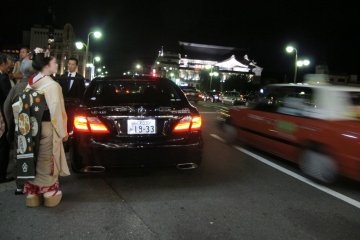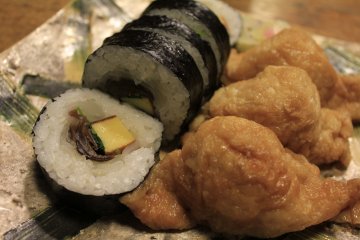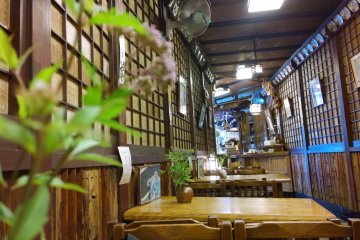Enjoy centuries old traditions, lively parades, mouth-watering street food, and contagious fun at one of Japan’s most popular summertime festivals—Gion Matsuri in Kyoto.
Highlights
- The grand parade of floats (Yamaboko Junko) is on July 17th (9am–1pm) and 24th (9:30am–11:50am). You can purchase a street-side seat ticket for the parade on July 17 through Holiday Travel (more details at the end of the article).
- The procession of portable shrines (Mikoshi Togyo) is on July 17th and 24th (the ceremony starts at 4pm on the 17th, with the mikoshi leaving the shrine around 6pm)
- Yoiyama evenings on July 14th–16th and 21st–23rd, where Kyoto’s downtown area is closed to traffic and filled with food stalls, drink vendors, and festive displays (6pm–11pm).
Gion Matsuri dates back to 869 and originated as an attempt by the people of Kyoto to appease the gods during an epidemic. Today, it is still held for the entire month of July and is one of Yasaka Shrine’s most important festivals. Following tradition, a local boy is chosen every year as a messenger of the gods, and from July 13 to July 17—the start of the first main parade—he must sit on one of the floats and not touch the ground.
Despite its namesake, the festival’s main events do not take place in Gion district, but instead are held on the opposite side of the Kamo River along Karasuma and Shijo street.
Yoiyama—Festive Nights

On each of the three nights before the main parades, Kyoto closes its downtown area to traffic and the streets become enlivened with food stalls and drink venders selling festival staples such as yakitori, taiyaki, takoyaki, and okonomiyaki. During these yoiyama nights, visitors can also observe festival floats up close, which are stationed along the streets, as well as admire artifacts displayed by families in front of their traditional machiya houses. Festival goers often dress in yukata to get into the festive spirit! Yoiyama evenings typically last from 6pm to 11pm.
Yamaboko Junko

Gion Matsuri’s two main parades, called Yamaboko Junko, occur on July 17 and 24, and are characterized by their grand, human-pulled and carried floats. These ornately-decorated floats are called yama and hoko in Japanese—with floats in the latter category standing up to 25 meters tall and weighing up to 12 tons! Some are even furnished with beautiful tapestries from Nishijin, Kyoto’s traditional textile producing district. Within and alongside the floats, people clad in festival attire play music with traditional Japanese instruments and present mesmerizing performances. The parade is meant to purify the streets before the Mikoshi Togyo.
The processions of these floats take place between roughly 9am and 11:30am and start from Shijo-Karasuma or Karasuma-Oike. The parade on July 17 features 23 floats, while the one on July 24 features 11.
Mikoshi Togyo

This ceremony starts around 4pm on July 17, then later at 6pm volunteers carry three portable shrines (mikoshi) from Yasaka Shrine to a facility that serves as a temporary resting point for the gods (otabisho) in downtown Kyoto. On the evening of July 24, they return the mikoshi to Yasaka Shrine.
Reserve a Seat for an Unforgettable Experience

Enrich your experience of this country-renowned festival with a reserved seat for the Yamaboko Junko on July 17. With a designated seat, you can watch the performance worry free. In addition to the ticket, you will also receive a pamphlet and commemorative card. The parade will pass by from around 10:20am to 11:20am.
Booking link: https://holiday-travel.co.jp/products/39











